《数据结构与程序设计 C 语言描述 第2版 英文》
| 作者 | (美)鲁克泽(Kruse,R.)等著 编者 |
|---|---|
| 出版 | 北京:清华大学出版社 |
| 参考页数 | 671 |
| 出版时间 | 1998(求助前请核对) 目录预览 |
| ISBN号 | 7302029431 — 求助条款 |
| PDF编号 | 88900138(仅供预览,未存储实际文件) |
| 求助格式 | 扫描PDF(若分多册发行,每次仅能受理1册) |
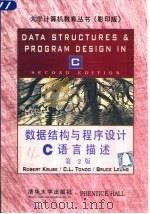
CHAPTER1
Programming Principles1
1.1 Introduction2
CHAPTER2
CHAPTER3
1.2 The Game of Life4
1.2.1 Rules for the Gane of Life4
CHAPTER4
1.2.2 Examples5
CHAPTER5
1.2.3 The Solution6
CHAPTER6
1.2.4 Life:The Main Program7
CHAPTER7
CHAPTER8
CHAPTER9
1.3.1 Names10
1.3 Programming Style10
CHAPTER10
Contents11
PREFACE11
CHAPTER11
Synopsis12
1.3.2 Documentation and Format12
CHAPTER12
Changes in the Second Edition13
Course Structure14
1.3.3 Refinement and Modularity14
Book Production15
Acknowledgments16
1.4 Coding,Testing,and19
Further Refinement19
1.4.1 Stubs19
1.4.2 Counting Neighbors20
1.4.3 Input and Output21
1.4.4 Drivers24
1.4.5 Program Tracing25
1.4.6 Principles of Program Testing26
Pointers and Pitfalls30
Review Questions32
References for Further Study32
C32
Programming Principles33
The Game of Life33
Introduction to34
Software Engineering34
2.1 Program Maintenance35
2.1.1 Review of the Life Program35
2.1.2 A Fresh Start and a New Method forLife37
2.2 Algorithm Development:40
2.2.1 Lists:Specifications for a40
Data Structure40
A Second Version of Life40
2.2.2 The Main Program45
2.2.3 Information Hiding47
Subprograms48
2.2.4 Refinement:Development of the48
2.2.5 Verification of Algorithms50
2.3 Coding55
2.3.1 The List Functions55
2.3.2 Error Processing56
2.3.3 Demonstration and Testing57
2.4 Coding the Life Functions62
2.5 Program Analysis and Comparison66
2.6 Conclusions and Preview68
2.6.1 The Game of Life68
2.6.2 Program Design70
2.6.3 C73
Pointers and Pitfalls75
Review Questions75
References for Further Study76
Stacks and Recursion77
3.1 Stacks78
3.1.1 Introduction78
3.1 2 First Example:Reversing a Line79
3 1 3 Information Hiding80
3.1.4 Specifications for a Stack81
3 1.5 Implementation of Stacks83
31.6 Linked Stacks85
3.2 Introduction to Recursion91
3.2.1 Stack Frames for Subprograms91
3.2 2 Tree of Subprogram Calls91
3.2.3 Factorials:A Recursive Definition93
3.2 4 Divide and Conquer:95
The Towers of Hanoi95
3.3 Backtracking:Postponing the Work101
3.3.2 Example:Four Queens102
3.3.1 Solving the Eight-Queens Puzzle102
3.3.3 Backtracking103
Choosing the Data Structures104
3.3.4 Refinement:104
3.3 5 Analysis of Backtracking107
3.4.1 Designing Recursive Algorithms110
3.4 Principles of Recursion110
3 4.2 How Recursion Works111
3.4.3 Tail Recursion115
3.4.4 When Not to Use Recursion116
3 4.5 Guidelines and Conclusions120
Pointers and Pitfalls122
Review Questions124
References for Further Study124
Queues and Linked Lists126
4.1 Definitions127
4.2 Implementations of Queues131
4.3 Circular Queues in C135
4.4 Application of Queues:Simulation139
4.4.1 Introduction139
4.4.2 Sirmulation of an Airport140
4.4.3 The Main Program142
4.4.4 Steps of the Simulation144
4.4.5 Pseudo-Random Numbers147
4.4.6 Sample Results149
4.5 Pointers and Linked Lists152
4.5.1 Introduction and Survey152
4.5.2 PointersandDynamicMemoryinC155
4.5.3 The Basics of Linked Lists159
4.6 Linked Queues161
4.71 PurposeoftheProject166
Polynomial Arithmetic166
4.7 Application:166
4.7.2 The Main Program166
Implementation171
4.7.3 Data Structures and Their171
4.7.4 Reading and Writing Polynomials172
4.7.5 Addition of Polynomials174
4.7.6 Completing the Project176
4.8.1 Introduction179
Their Implementations179
4.8 Abstract Data Types and179
4.8.2 General Definitions180
4.8.3 Refinement of Data Specification183
Review Questions185
Pointers and Pitfalls185
References for Further Study186
General Lists187
5.1 List Specifications188
5.2.1 Contiguous Implementation190
5.2 Implementation of Lists190
5.2.2 Simply Linked Implementation191
5.2.3 Variation:Keeping the CurrentPosition195
5.2.4 Doubly Linked Lists197
5.2.5 Comparison of Implementations200
5.3 Strings202
5.4 Application:A Text Editor205
5 4.1 Specifications205
5.4.2 Implementation207
5.5 Linked Lists in Atrays214
5.6 Generating Permutations223
Pointers and Pitfalls228
Review Questions229
References for Further Study230
Searching231
Introduction and Notation232
6.1 Searching:232
6.2 Sequential Search235
6.3.1 Introducton and Specification241
6.3 Coatrooms:A Project241
Programs244
6 3.2 Demonstration and Testing244
6.4 Binary Search248
6.4.1 Algorithm Development249
6.4.2 The Forgetful Version249
6.4.3 Recognizing Equality252
6.5 Comparison Trees254
6.5.1 Analysisfor n=10255
6.5.2 Generalizaton258
6.5.3 Comparison of Methods261
6.5.4 A General Relationship263
6.6 Lower Bounds264
6.7.1 Introducton269
6.7 Asymptotics269
6.7 2 The Big-O Notation270
6.7.3 Imprecision of the Big-O Notation273
6.7.4 Ordering of Cornmon Functions274
Pointers and Pitfalls275
Review Questions276
References for Further Study276
Sorting278
7.1 Introduction and Notation279
7.2 Insertion Sort280
7 2.1 Ordered Lists280
7 2.2 Sorting by Insertion281
7.2.3 Linked Version283
7 2.4 Analysis285
7.3 Selection Sort288
7.3.1 The Algorithm289
7.3.2 Contiguous Implementation290
7.3.4 Comparisons291
7.3.3 Analysis291
7.4 Shell Sort293
7.5 Lower Bounds295
7.6 Divide-and-Conquer Sorting298
7.6.1 The Main Ideas298
7.6.2 AnExample299
7.7 Mergesort for Linked Lists304
7.7.1 The Functions304
7.7.2 Analysis of Mergesort306
7.8 Quicksort for Contiguous Lists311
7.8.1 The Main Function311
7.8.2 Partitioning the List312
7.8.3 Analysis of Quicksort314
7.8 4 Average-Case Anialysis of Quicksort316
7.8 5 Comparison with Mergesort318
7.9 Heaps and Heapsort321
7.9.1 Two-Way Trees as Lists322
7.9.2 Heapsort323
7.9.3 Analysis of Heapsort327
7.9.4 Priority Queues328
7.10 Review:Comparison of Methods330
Pointers and Pitfalls333
Review Questions334
References for Further Study334
Tables and Information Retrieval336
8.1 Introduction:337
Breaking the lgn Barrier337
8.2 Rectangular Arrays337
8.3 Tables of Various Shapes340
8.3.1 Triangular Tables340
8.3.2 Jagged Tables342
8.3.3 Inverted Tables342
8.4 Tables:A New Abstract Data Type345
8.5 Application:Radix Sort348
8.5.1 The Idea348
8.5 2 Implementation349
8.5 3 Analysis352
8.6 Hashing353
8.6.1 Sparse Tables353
8 6.2 Choosing a Hash Function355
8.6 3 Collision Resolution with357
Open Addressing357
8.6.4 Collision Resolution by Chaining362
8.7 Analysis of Hashing367
8.8 Conclusions:373
Comparison of Methods373
8.9.2 Specification of Data Structures374
The Life Game Revisited374
8.9.1 Choice of Algorithm374
8.9 Application:374
8 9.3 The Main Program376
8.9.4 Functions377
Pointers and Pitfalls380
Review Questions381
References for Further Study382
Binary Trees383
9.1 Introduction to Binary Trees384
9.1.1 Definitions384
9.1.2 Traversal of Binary Trees386
Binary Trees391
9.1.3 Linked Implementation of391
9.2 Binary Search Tees396
9.2.1 Ordered Lists and Implementations397
9.2.2 Treesearch398
9.2.3 Insertion into a Binary Search Tree401
9.2.4 Treesort404
9.2.5 Deletion from a Binary Search Tree406
9.3 Building a Binary Search Tree414
9.3.1 Getting Started415
9.3.2 Declarations and the Main Function416
9.3.3 Inserting a Node417
9.3.4 Finishing the Task418
9.3.5 Evaluation419
9.3.6 Random Search Trees and419
Optimality419
9.4 Height Balance:AVL Trees422
9.4.1 Definition423
9.4.2 Insertion of a Node424
9.4.3 Deletion of a Node431
9.4.4 The Height of an AVL Tree433
9.5.1 Introduction438
9.5 Splay Trees:438
A Self-Adjusting Data Structure438
9.5.2 Splaying Steps439
9.5.3 Splaying Algorithm442
9.5.4 Amortized Algorithm Analysis:446
Introduction446
9.5.5 Amortized Analysis of Splaying449
Pointers and Pitfalls455
Review Questions456
References for Further Study458
Multiway Trees459
10.1 Orchards,Trees,and Binary Trees460
10.1.1 On the Classification of Species460
10.1.2 Ordered Trees461
10.1.3 Forests and Orchards463
10.1.4 The Formal Correspondence464
10.1.5 Rotations465
10.1.6 Summary466
10.2 Lexicographic Search Trees:Tries468
10.2.2 Searching for a Key468
10.2.1 Tries468
10.2.4 Insertion into a Trie470
10.2.3 CAlgorithm470
10.2.5 Deletion from a Trie472
10.2.6 Assessment of Tries472
10.3 Extemal Searching:B-Trees473
10.3.1 Access Time473
10.3.2 Multiway Search Trees474
10.3.3 Balanced Mutiway Trees474
10.3.4 Insertion into a B-tree475
10.3.5 CAlgorithms:477
Searching and Insertion477
10.3.6 Deletionfrom a B-tree483
10.4 Red-Black Trees492
10 4.1 Introcuction492
10.4.2 Definition and Analysis493
10.4.3 Insertion495
10.4.4 C Insertion496
10.5 Tree-Structured Programs:501
Look-Ahead in Games501
10.5.1 Game Trees501
10.5.2 The Minimax Method502
10.5.3 Algorithm Development503
10.5.4 Refinement504
Pointers and Pitfalls507
Review Questions507
References for Further Study508
Graphs510
11.1.1 Definitions and Examples511
11.1 Mathematical Background511
11.1.2 Undirected Graphs512
11.1.3 Directed Graphs512
11.2 Computer Representation513
11.3 Graph Traversal517
11.3.1 Methods517
11.3.2 Depth-First Algorithm518
11.3.3 Breadth-First Algorithm519
11.4 Topological Sorting520
11.4.1 The Problem520
11.4.2 Depth-First Algorithm522
11.4.3 Breadth-First Algorithm523
11.5 A Greedy Algorithm:525
Shortest Paths525
11.6 Graphs as Data Structures529
Pointers and Pitfalls531
Review Questions532
References for Further Study532
Case Study:The Polish Notation533
12.1 The Problem534
12.1.1 The Quadratic Formula534
12.2.1 Expression Trees536
12.2 The Idea536
12.2.2 Polish Notation538
12.2.3 C Method539
12.3 Evaluation of Polish Expressions540
12.3.1 Evaluation of an Expression inPrefix Form540
12.3.2 C Conventions541
12.3.3 C Function for Prefix Evaluation542
12.3.4 Evaluation of Postfix Expressions542
12.3.5 Proof of the Program:544
Counting Stack Entries544
12.3.6 Recursive Evaluafion of547
Postfix Expressions547
12.4 Translation from Infix Form to PolishForm551
12.5.1 Overall Structure558
12.5 An Interactive Expression558
Evaluator558
12 5.2 Representation of the Data560
12.5.3 Initialization and Auxiliary Tasks562
12.5.4 Translation of the Expression566
12.5.5 Evaluating the Expression574
12.5.6 Graphing the Expression576
References for Further Study578
APPENDIX A579
Mathematical Methods579
A.1 Sums of Powers of Integers580
A.2 Logarithms582
A.2.2 Simple Properties583
A.2.1 Definition of Logarithms583
A.2.3 Choice of Base584
A.2.4 Natural Logarithms584
A.2.5 Notation585
A.2.6 Change of Base586
A.2.7 Logarithmic Graphs586
A.2.8 Harmonic Numbers588
A.3 Permutations,Combinations,589
Factorials589
A.3.1 Permutatiors589
A.3.2 Combinations589
A.3.3 Factorials590
A.4 Fibonacci Numbers592
A.5.2 The Proof by One-to-One594
Correspondences594
A.5 Catalan Numbers594
A.5.1 The Main Result594
A.5.3 History596
A.5.4 Numerical Results597
References for Further Study598
APPiENDIX B600
Removal of Recursion600
B.1 General Methods for Removing601
Recursion601
B.1.1 Preliminary Assumptions601
B.1.2 General Rules602
B.1.3 Indirect Recursion603
B.1.4 Towers of Hanoi603
B.1.5 Further Simplifications605
B.2 Recursion Removal by Folding606
B.2.1 Program Schemata606
B.2.2 Proof of the Transformation607
B.2.3 Towers of Hanoi:609
The Final Version609
B.3 Nonrecursive Quicksort611
B.4 Stackless Recursion Removal:613
Mergesort613
B.5 Threaded Binary Trees617
B.5.1 Introduction617
B.5.2 Threads619
B.5.3 Inorder and Preorder Traversal620
B.5 4 Insertion in a Threaded Tree621
B.5.5 Postorder Traversal623
References for Further Study627
APPENDIX C628
An Introduction to C628
C.1 Introduction629
C.1.1 Overview of a C Program629
C.2 C Elements629
C.2.1 Reserved Words629
C.2.2 Constants629
C.3 Types and Declarations631
C.3.1 Basic Types631
C.3.2 Arrays631
C.3.3 Enumerations631
C.3.5 Unions632
C.3.4 Structures632
C.3.6 Type Definitions with typedef634
C.4 Operators635
C.5 Control Flow Statements636
C.5.1 If-Else636
C.5.2 Switch636
C.5 3 Loops637
C.5.4 Break and Continue637
C.5.5 Goto637
C.6 Pointers638
C.6.1 Pointer to a Simple Variable638
C.6.2 Pointer to an Array639
C.6 3 Array of Pointers640
C.6.4 Pointer to Structures641
C.7 Functions642
C.7.1 Arguments to Functions:642
Call by Value642
C.7.2 Arguments to Functions:643
Call by Reference643
C.7.3 Function Prototypes and IncludeFiles644
C.8 Pointers and Functions644
C.8.1 Pointer to a Function644
C.8.2 Functions that Return a Pointer645
C.8.3 Pointer to a Pointer as an646
Argument646
References for Further Study647
INDEX649
1998《数据结构与程序设计 C 语言描述 第2版 英文》由于是年代较久的资料都绝版了,几乎不可能购买到实物。如果大家为了学习确实需要,可向博主求助其电子版PDF文件(由(美)鲁克泽(Kruse,R.)等著 1998 北京:清华大学出版社 出版的版本) 。对合法合规的求助,我会当即受理并将下载地址发送给你。
高度相关资料
-

- 数据结构 C语言
- 1997 重庆:重庆大学出版社
-

- 数据结构题集(C语言版)
- 1999
-

- 数据结构:C++语言描述
- 2020
-

- 数据结构C++语言描述
- 1998
-

- 数据结构导学:C 语言描述
- 华中科技大学出版社
-

- 数据结构:C 语言描述
- 华中科技大学出版社
-
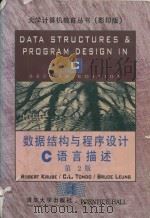
- Data structures and program design in C Second Edition = 数据结构与程序设计C语言描述 第2版
- 1998 Tsinghua University Pr.
-
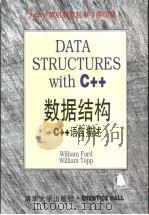
- 数据结构 C++ 语言描述 英文
- 1997 清华大学出版社
-
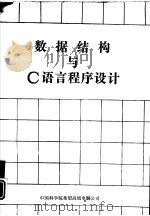
- 数据结构与C语言程序设计
- 1991 北京希望电脑公司
-
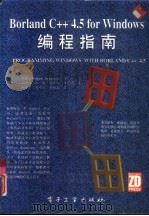
- Borland C++4.5 for Windows编程指南
- 1995 北京:电子工业出版社
-

- 数据结构实用教程 C/C++描述
- 1999 北京:清华大学出版社
-
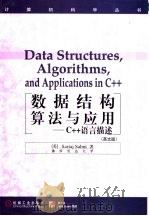
- 数据结构算法与应用 C++语言描述 英文版
- 1999 北京:机械工业出版社
-
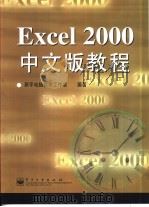
- Excel 2000中文版教程
- 1999 北京:电子工业出版社
-

- 数据结构与算法-C语言程序设计
- 1988 上海:上海交通大学出版社
提示:百度云已更名为百度网盘(百度盘),天翼云盘、微盘下载地址……暂未提供。➥ PDF文字可复制化或转WORD
